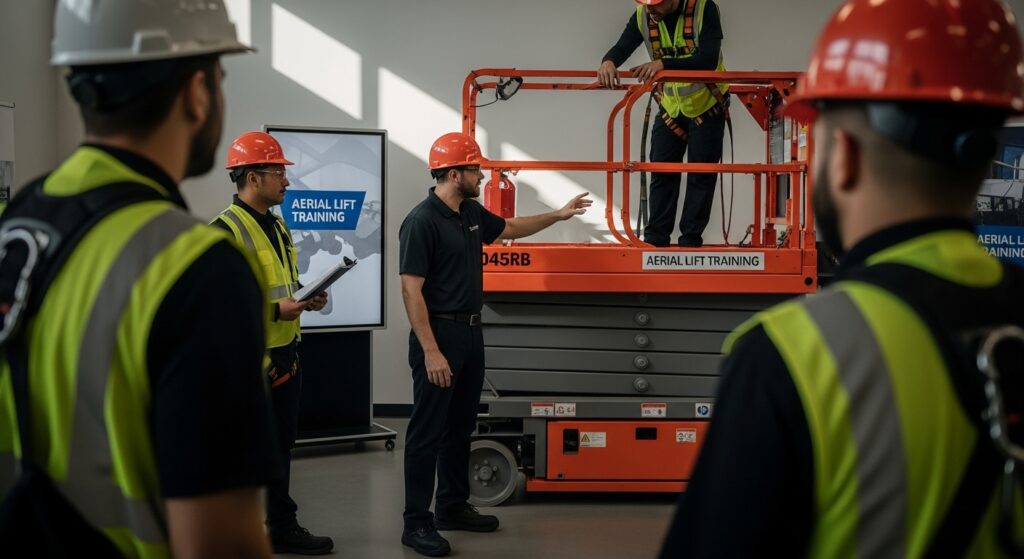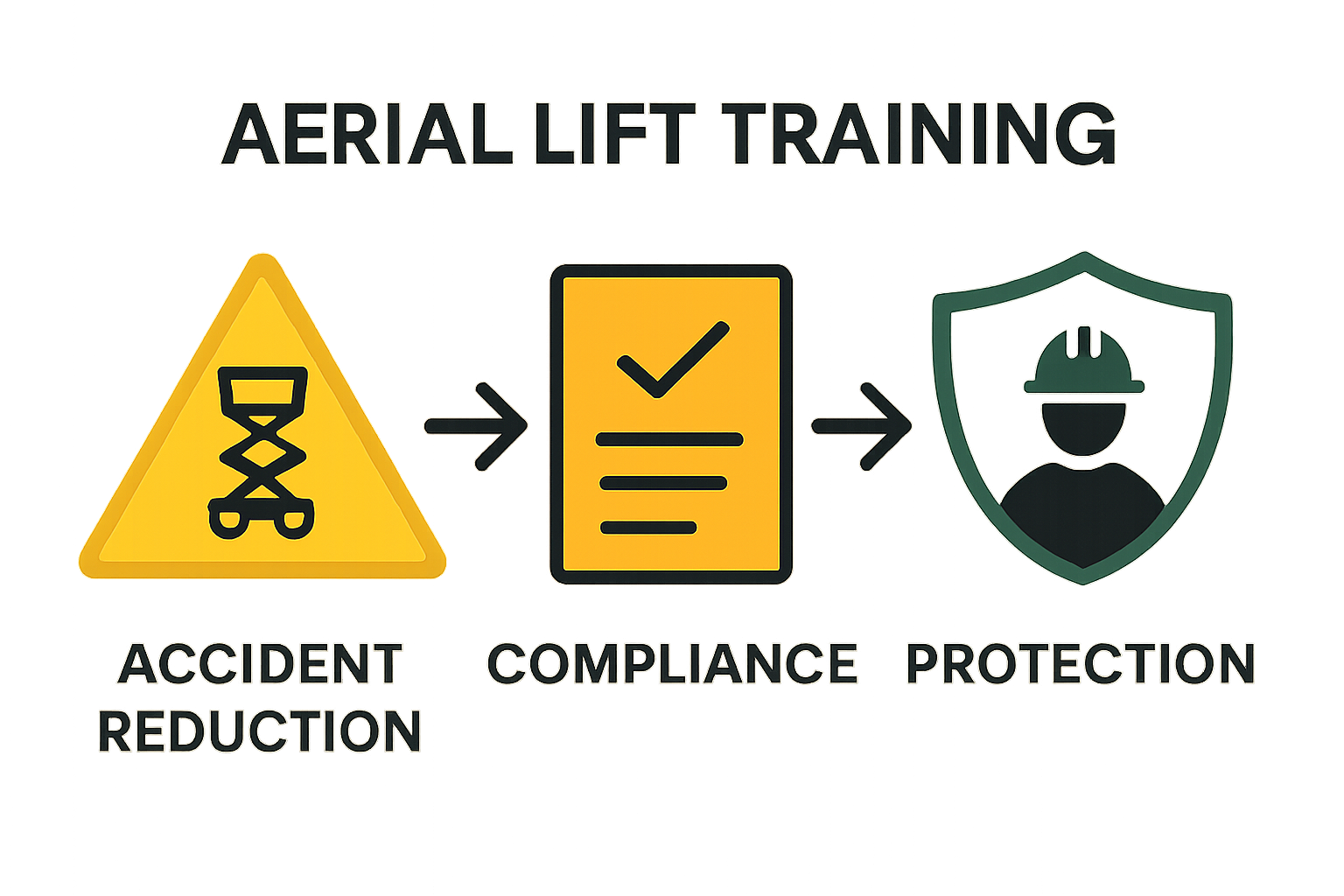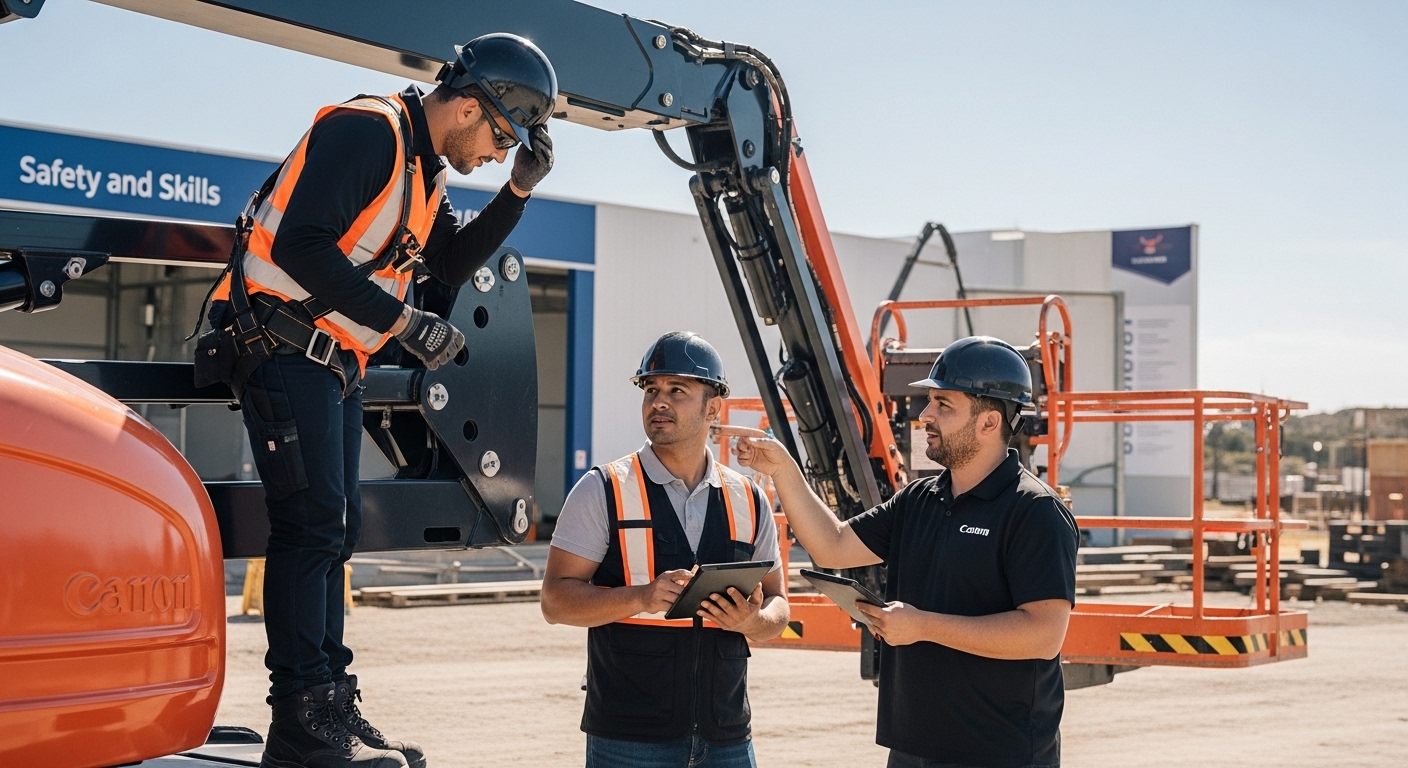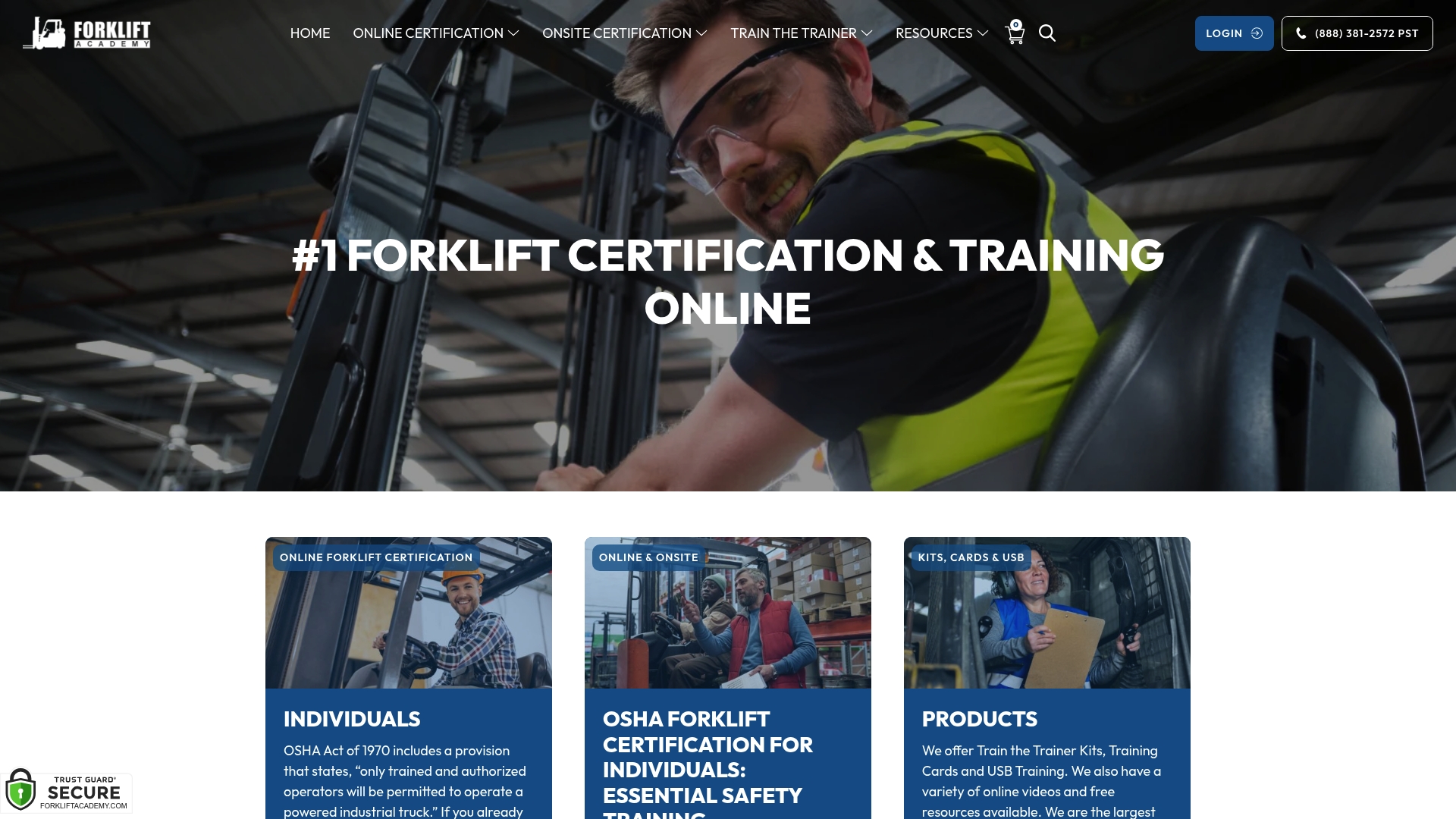
Aerial lift accidents might seem rare but the reality tells a different story. OSHA reports that about 25 workers lose their lives and 95 are seriously injured every year in aerial lift incidents. Most people think operating these machines is just about pushing a few buttons or pulling a lever. The surprising truth is that the real danger lies in what you do not know and proper aerial lift training can be the difference between a normal workday and a life-altering accident.
| Takeaway | Explanation |
|---|---|
| Aerial lift training prevents workplace accidents | Specialized training equips workers to handle elevated work safely, significantly reducing the risk of incidents. |
| Training enhances operator skills | Comprehensive training develops technical prowess and decision-making capabilities essential for safely managing aerial lift operations. |
| Compliance with OSHA is crucial | Following OSHA guidelines ensures that training meets safety standards and reduces legal liabilities for organizations. |
| Specific training for different industries | Tailored programs address distinct safety and operational needs within sectors like construction, telecommunications, and warehousing. |
| Investing in training benefits overall productivity | Robust aerial lift training not only protects workers but also enhances efficiency, showcasing a company’s commitment to safety. |
Aerial lift training is a specialized safety education program designed to equip workers with the knowledge and skills necessary to operate elevated work platforms safely and effectively. According to CDC’s Occupational Safety Guidelines, these training programs are critical in preventing workplace accidents and protecting workers who perform tasks at height.
Aerial lifts include various mechanical platforms such as scissor lifts, boom lifts, and bucket trucks that allow workers to reach elevated work areas. These complex machines require specialized training to operate correctly. Operators must understand the unique characteristics and potential hazards associated with different types of aerial lift equipment, including weight distribution, stability requirements, and environmental limitations.
The following table summarizes different types of aerial lift equipment referenced in the article, along with their primary characteristics and applications.
| Equipment Type | Description | Typical Use Cases |
|---|---|---|
| Scissor Lift | Vertical lift platform with crisscrossing supports for direct upward movement | Warehousing, facility maintenance |
| Boom Lift | Extendable arm with a platform or bucket for flexible height and reach | Construction, outdoor maintenance |
| Bucket Truck | Vehicle-mounted lift with bucket for one or more workers, used for elevated access | Telecommunications, electrical work |
Professional aerial lift training covers several essential competencies that go beyond basic equipment operation. Key skills include:
These training programs not only teach technical skills but also cultivate a safety-first mindset among workers. By providing comprehensive education, aerial lift training helps organizations reduce workplace accidents, ensure regulatory compliance, and protect their most valuable asset: their employees.
Workplace safety is a critical concern for organizations across multiple industries, and aerial lift training plays a pivotal role in protecting workers from potential accidents and injuries. Comprehensive workplace safety strategies recognize that proper training is not just a regulatory requirement but a fundamental responsibility toward worker protection.
Statistics underscore the critical nature of aerial lift training. According to the Occupational Safety and Health Administration (OSHA), approximately 25 workers are killed and 95 are seriously injured every year in aerial lift incidents. These sobering numbers highlight the direct correlation between inadequate training and workplace accidents. Proper education can significantly reduce these risks by equipping workers with the knowledge to identify and mitigate potential hazards.

Aerial lift training serves multiple crucial functions in workplace safety management:
Organizations that invest in robust aerial lift training demonstrate a commitment to worker safety that extends beyond mere regulatory compliance. By providing thorough, systematic education, companies can create safer work environments, protect their employees, and ultimately improve overall operational efficiency and productivity.

Aerial lift training goes beyond basic equipment operation, focusing on comprehensive skill development that transforms workers into confident, competent professionals. Advanced training techniques are designed to build a holistic skill set that combines technical knowledge, safety awareness, and practical expertise.
Professional aerial lift training develops deep technical understanding of equipment functionality. According to CDC’s Occupational Safety Guidelines, operators learn precise control mechanisms, understand complex mechanical systems, and develop nuanced skills for navigating challenging work environments. This includes mastering intricate control interfaces, understanding weight distribution principles, and recognizing equipment limitations.
The training process encompasses multiple critical skill domains that extend far beyond basic operation:
These multifaceted skills transform operators from mere equipment users to true professionals who can navigate complex workplace challenges with confidence and expertise. By investing in comprehensive training, organizations develop a workforce capable of executing tasks safely, efficiently, and with exceptional precision.
Aerial lift training operates within a complex regulatory framework designed to protect workers and ensure safe equipment operation. Understanding OSHA compliance standards is fundamental to implementing comprehensive training programs that meet legal requirements and workplace safety objectives.
The Occupational Safety and Health Administration (OSHA) establishes stringent guidelines for aerial lift training. These regulations mandate that employers provide comprehensive training programs that cover theoretical knowledge and practical skills. According to OSHA standards, training must include both classroom instruction and hands-on demonstrations, ensuring operators understand both conceptual principles and real-world application techniques.
Successful aerial lift training programs must address multiple critical compliance elements:
Compliance is not merely about following rules but creating a holistic safety ecosystem that protects workers, reduces organizational liability, and promotes a culture of proactive risk management. By implementing rigorous training standards, organizations demonstrate their commitment to worker safety and professional development.
Aerial lift training plays a critical role across multiple industrial sectors, providing specialized safety and operational knowledge tailored to unique workplace environments. Exploring the impact of technological advancements reveals how comprehensive training has become essential for modern workplace safety and efficiency.
Different industries require nuanced aerial lift training approaches that address their specific operational challenges. According to CDC workplace safety research, sectors such as construction, telecommunications, warehousing, and maintenance have distinct requirements for aerial lift operator training that go beyond generic safety protocols.
Each industry demands unique skill sets and safety considerations for aerial lift operations:
By developing industry-specific training programs, organizations can ensure that aerial lift operators not only understand general safety principles but also master the specialized skills required in their particular work environment.
This comparison table outlines how aerial lift training requirements and core safety concerns differ by industry as described in the article, helping clarify the need for industry-specific focus.
| Industry | Unique Training Focus | Common Hazards/Needs |
|---|---|---|
| Construction | Navigating complex, changing worksites | Multiple elevation challenges, site variability |
| Telecommunications | Accessing elevated infrastructure | Working near communication towers, electrical risks |
| Warehouse Logistics | Material handling at height | Precise maneuvering, inventory management |
| Maintenance/Facility Mgmt | Repair and inspection at elevation | Equipment access, diverse building structures |
| Event/Entertainment | Staging, lighting, technical setup | Temporary structures, variable environments |
| This targeted approach minimizes risks, enhances operational efficiency, and demonstrates a commitment to comprehensive worker protection. |
Is workplace safety a top priority for you? If the risks outlined in “What is Aerial Lift Training? Understanding Safety and Skills” sound all too familiar—like uncertainty about OSHA compliance or concerns about preventing accidents on site—then it is time to act. Whether you are looking to build technical skills or ensure your team is fully certified, our specialized programs are more than just classes—they are your gateway to a safer, more productive environment. Explore practical resources and articles in our Forklift Safety Archives to deepen your understanding of best practices and recent safety trends.

Do not leave safety to chance or wait until an incident forces your hand. Get immediate access to OSHA-compliant aerial lift and scissor lift certification for individuals and teams through Forkliftacademy.com. Our hands-on and online training options, trusted for over 20 years, are designed to meet your goals for compliance, workplace confidence, and long-term career success. Ready to start? Visit our Forklift License programs now and move forward with confidence.
Aerial lift training is a specialized safety education program that equips workers with the knowledge and skills necessary to safely operate elevated work platforms such as scissor lifts and boom lifts.
Aerial lift training is crucial for preventing accidents and injuries among workers operating at height. It helps ensure compliance with safety regulations and develops a culture of safety within organizations.
Aerial lift training covers essential competencies, including pre-operation equipment inspection, proper use of personal protective equipment (PPE), understanding load capacities, recognizing workplace hazards, and emergency response procedures.
Different industries have unique requirements for aerial lift training based on their specific operational challenges. For instance, construction may focus on navigating complex work sites, while telecommunications training emphasizes accessing elevated infrastructure.